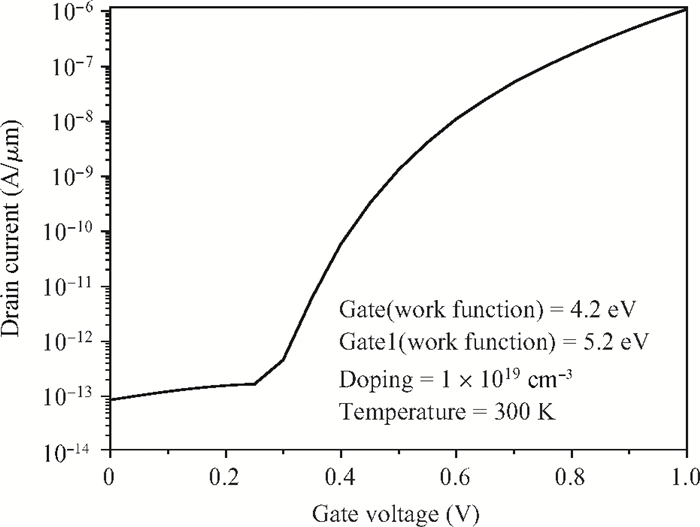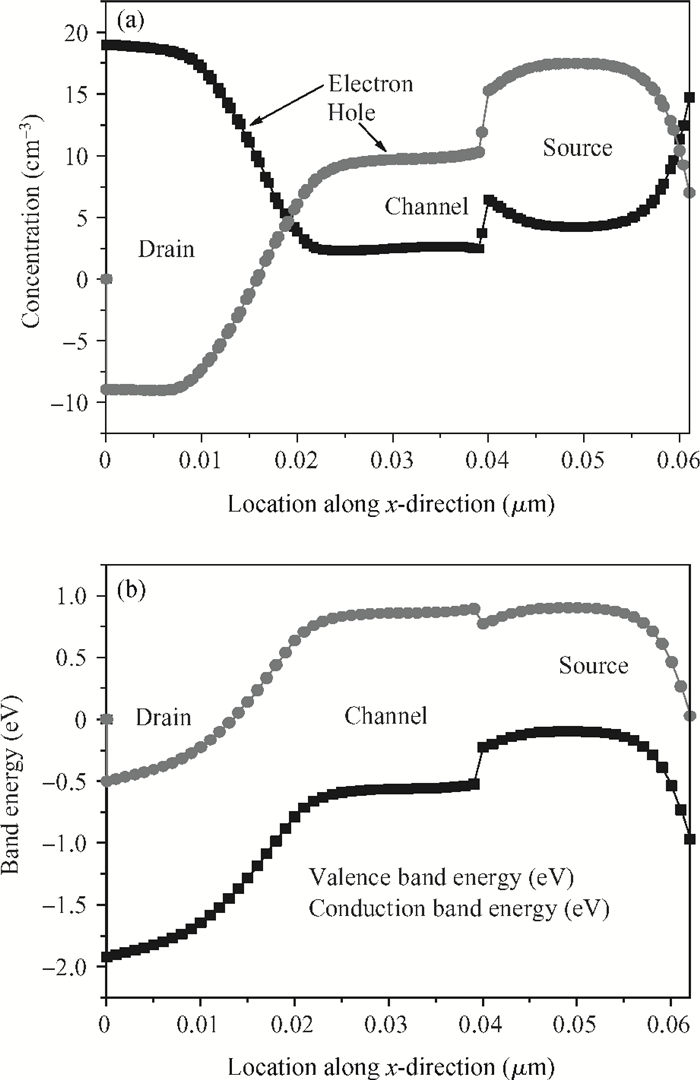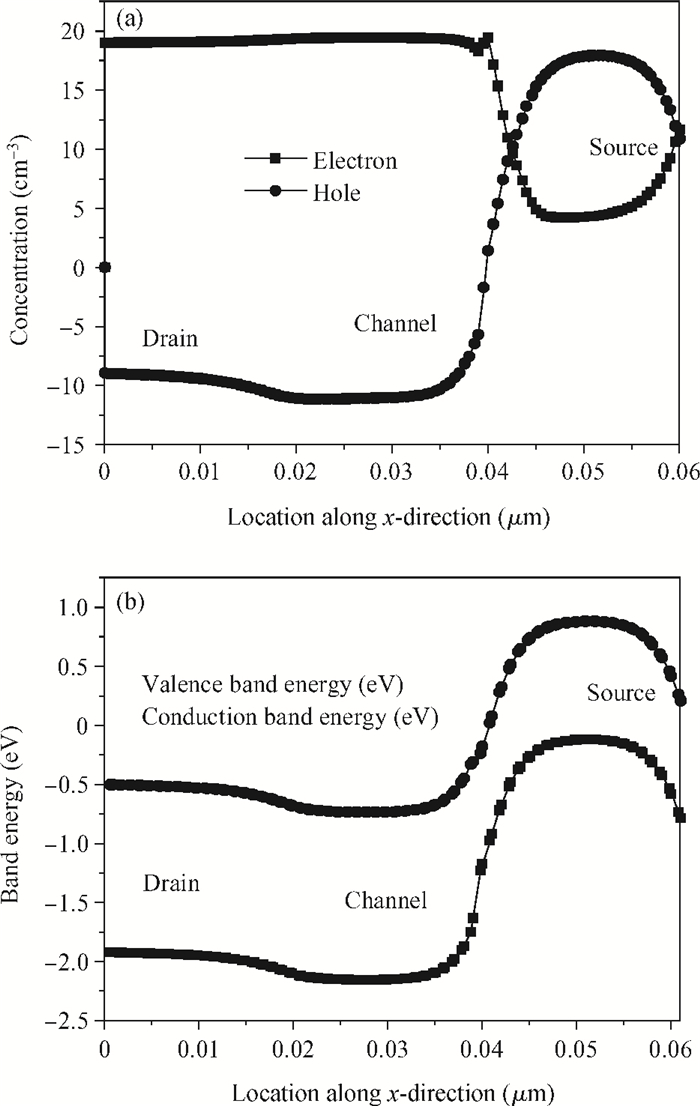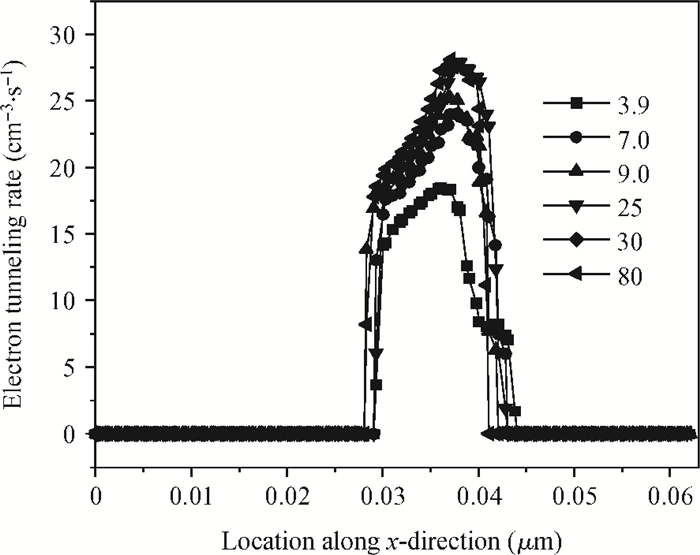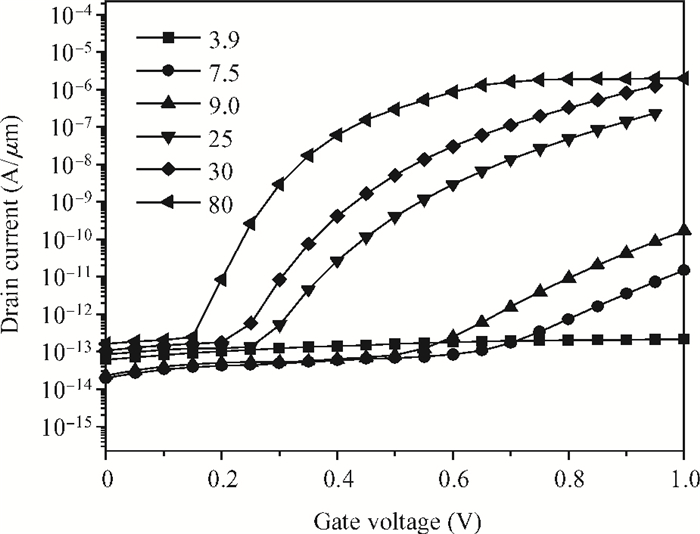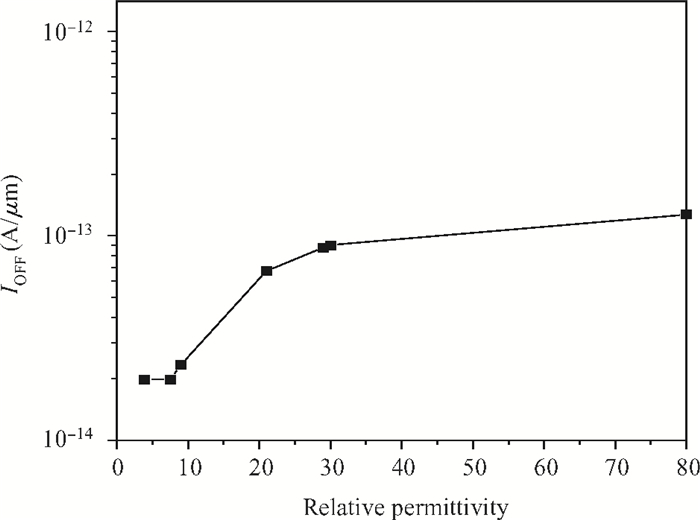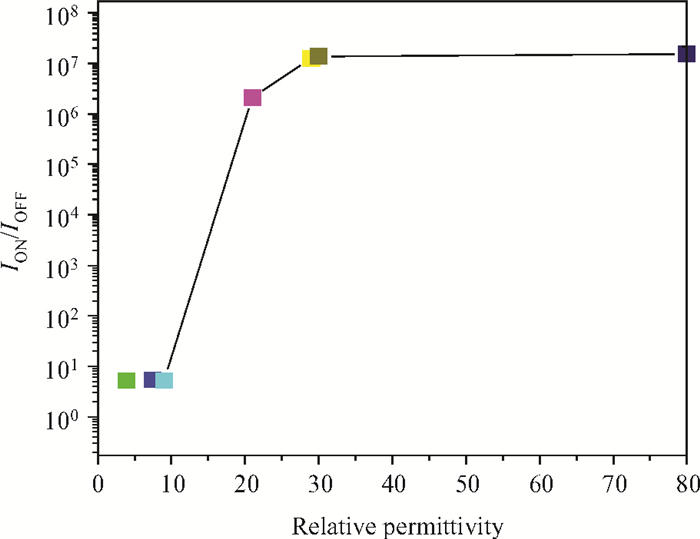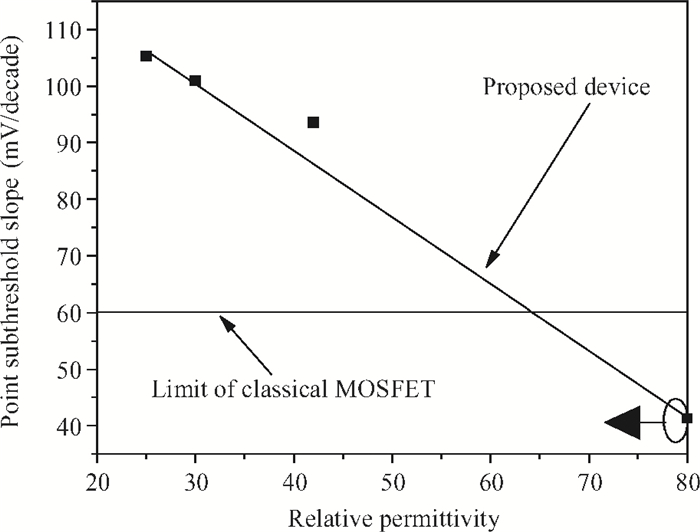| Citation: |
Shiromani Balmukund Rahi, Bahniman Ghosh, Pranav Asthana. A simulation-based proposed high-k heterostructure AlGaAs/Si junctionless n-type tunnel FET[J]. Journal of Semiconductors, 2014, 35(11): 114005. doi: 10.1088/1674-4926/35/11/114005
****
S B Rahi, B Ghosh, P Asthana. A simulation-based proposed high-k heterostructure AlGaAs/Si junctionless n-type tunnel FET[J]. J. Semicond., 2014, 35(11): 114005. doi: 10.1088/1674-4926/35/11/114005.
|
A simulation-based proposed high-k heterostructure AlGaAs/Si junctionless n-type tunnel FET
DOI: 10.1088/1674-4926/35/11/114005
More Information
-
Abstract
We propose a heterostructure junctionless tunnel field effect transistor (HJL-TFET) using AlGaAs/Si. In the proposed HJL-TFET, low band gap silicon is used in the source side and higher band gap AlGaAs in the drain side. The whole AlGaAs/Si region is heavily doped n-type. The proposed HJL-TFET uses two isolated gates (named gate, gate1) with two different work functions (gate=4.2 eV, gate1=5.2 eV respectively). The 2-D nature of HJL-TFET current flow is studied. The proposed structure is simulated in Silvaco with different gate dielectric materials. This structure exhibits a high on current in the range of 1.4×10-6 A/μm, the off current remains as low as 9.1×10-14 A/μm. So ION/IOFF ratio of ≃ 108 is achieved. Point subthreshold swing has also been reduced to a value of ≃ 41 mV/decade for TiO2 gate material. -
References
[1] Kanungo S, Rahaman H, Gupta P S. A detail simulation study on extended source ultra-thin body double-gated tunnel FET. IEEE 5th International Conference on Computers and Devices for Communication (CODEC), 2012 http://ieeexplore.ieee.org/document/6509242/[2] Wang P Y, Tusi B Y. Si1-xGex epitaxial tunnel layer structure for P-channel tunnel FET improvement. IEEE Trans Electron Devices, 2013, 60(12):4098 doi: 10.1109/TED.2013.2287633[3] Ganapathi K, Yoon Y, Salahuddin S. Analysis of InAs vertical and lateral band-to-band tunneling transistors:leveraging vertical tunneling for improved performance. Appl Phys Lett, 2010, 97(3):033504 doi: 10.1063/1.3466908[4] Ionescu A M, Riel H. Tunnel field-effect transistors as energy-efficient electronic switches. Nature, 2011, 479:329 doi: 10.1038/nature10679[5] Mishra R, Ghosh B, Banarjee S K. Device and circuit performance evaluation and improvement of SiGe tunnel FETs. IEEE International Conference on Enabling Science and Nanotechnology (ESciNano), 2011 http://ieeexplore.ieee.org/xpl/articleDetails.jsp?arnumber=5701031[6] Mamilla B K, Naiyar S, Mishra R, et al. A Ⅲ-Ⅴ group tunnel FETs with good switching characteristics and their circuit performance. International Journal of Electronics Communication and Computer Technology, 2011, 1(2):26 http://www.oalib.com/paper/2077180[7] Ghosh B, Akram M W. Junctionless tunnel field effect transistor. IEEE Electron Device Lett, 2013, 34(5):584 doi: 10.1109/LED.2013.2253752[8] Bal P, Akram M W, Mondal P, et al. Performance estimation of sub-30 nm junctionless tunnel FET (JLTFET). J Comput Electron, 2013, 12:782 doi: 10.1007/s10825-013-0483-6[9] Asthana P K, Ghosh B, Goswami Y, et al. High speed and low power ultra-deep-submicron Ⅲ-Ⅴ hetero-junctionless tunnel field effect transistor. IEEE Trans Electron Devices, 2014, 61(2):479 doi: 10.1109/TED.2013.2295238[10] Colinge J P, Lee C W, Afzalian A, et al. Nanowire transistors without junctions. Nature Nanotechnol, 2010, 5(3):225 doi: 10.1038/nnano.2010.15[11] Lee C W, Afzalian A, Akhavan N D, et al. Junctionless multigate field-effect transistor. Appl Phys Lett, 2009, 94(5):053511 doi: 10.1063/1.3079411[12] Mandol P, Ghosh B, Bal P. Planner junctionless transistor with non-uniform channel doping. Appl Phys Lett, 2013, 102:133505 doi: 10.1063/1.4801443[13] http://www.silvaco.com. accessed on 27 July, 2013[14] Silvaco (Atlas) User manual, 19 December 2013[15] Hansch W, Vogelsang T, Kirchner R, et al. Carrier transport near the Si/SiO2 interface of a MOSFET. Solid-State Electron, 1989, 32(10):839 doi: 10.1016/0038-1101(89)90060-9[16] Kranti A, Lee C W, Ferain I, et al. Junctionless nanowire transistor:properties and design guidelines. Proc 34th IEEE Eur Solid-State Device Res Conf, 2010:357 http://adsabs.harvard.edu/cgi-bin/nph-data_query?link_type=ABSTRACT&bibcode=2011SSEle..65...33C[17] Choi S J, Moon D I, Kim S, et al. Nonvolatile memory by all-around-gate junctionless transistor composed of silicon nanowire on bulk substrate. IEEE Electron Device Lett, 2011, 32(5):602 doi: 10.1109/LED.2011.2118734[18] Lee C W, Yan R, Ferain I, et al. Nanowire zero-capacitor DRAM transistors with and without junctions. Proc 10th IEEE-NANO, 2010:242 http://ieeexplore.ieee.org/xpls/icp.jsp?arnumber=5697888[19] Lattanzio L, De Micheielis L, Biswas A, et al. Abrupt switch based on internally combined band-to-band-and barrier tunneling mechanisms. IEEE Proceedings of the European Solid-State Device Research Conference (ESSDERC), 2010 http://www.sciencedirect.com/science/article/pii/S0038110111002449[20] Boucart K, Ionescu A M. Double gate tunnel FET high k gate dielectric. IEEE Trans Electron Devices, 2007, 54(7):1725 doi: 10.1109/TED.2007.899389[21] Razavi P, Orouji A A. Dual material gate oxide stack symmetric double gate MOSFETs:improving short channel effects of nanoscale double gate MOSFET. IEEE 11th International Biennial Baltic Electronics Conference, 2008 http://ieeexplore.ieee.org/xpls/abs_all.jsp?arnumber=4657483[22] Kranti A, Lee C, Ferain I, et al. Junctionless 6T SRAM cell. IET Electron Lett, 2010, 46(22):1491 doi: 10.1049/el.2010.2736[23] Bjork M T, Knoch J, Schmid H, et al. Silicon nanowire tunneling field-effect transistors. Appl Phys Lett, 2008, 92(19):193504 doi: 10.1063/1.2928227[24] Hinkle C L, Sonnet A M, Vogel E M, et al. GaAs interfacial self-cleaning by atomic layer deposition. Appl Phys Lett, 2008, 92:071901 doi: 10.1063/1.2883956[25] Passlack M, Hong M, Mannaerts J P, et al. In-situ Ga2O3 process for GaAs inversion/accumulation device and surface passivation applications. IEEE Int Electron Devices Meeting, 1995:383 http://ieeexplore.ieee.org/xpls/abs_all.jsp?arnumber=499220[26] Holtij T, Schwarz M, Graef M, et al. Model for investigation of Ion/Ioff ratios in short-channel junction less double gate MOSFET. IEEE, 2013 http://ieeexplore.ieee.org/document/6523497/[27] D Kim, T Krishnamohan, Smith L, et al. Band to band tunneling study in high mobility material:Ⅲ-Ⅴ Si, Ge, and strained SiGe. IEEE 65th Annual Device Research Conference, 2007 http://ieeexplore.ieee.org/xpls/abs_all.jsp?arnumber=4373650[28] Taur Y. An analytical solution to a double-gate MOSFET with undoped body. IEEE Electron Device Lett, 2000, 21(5):245 doi: 10.1109/55.841310[29] Goswami Y, Tripathi B M, Pranav A, et al. Junctionless tunnel field effect transistor with enhanced performance using Ⅲ-Ⅴ semiconductor. Journal of Low Power Electronics, 2013, 9:496 doi: 10.1166/jolpe.2013.1281[30] Goswami Y, Ghosh B, Asthana P K. Analog performance of Si junctionless tunnel field effect transistor and its improvisation using Ⅲ-Ⅴ semiconductor. RSC Adv, 2014, 4:10761 doi: 10.1039/c3ra46535g -
Proportional views





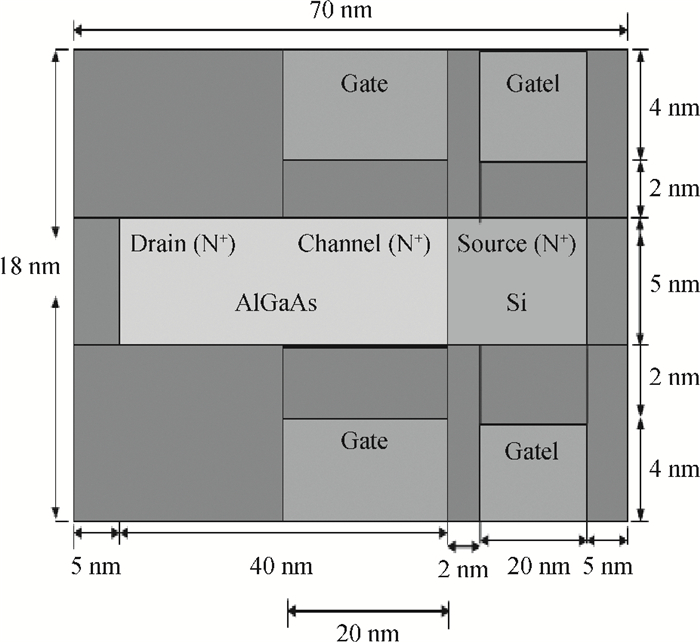
 DownLoad:
DownLoad:
